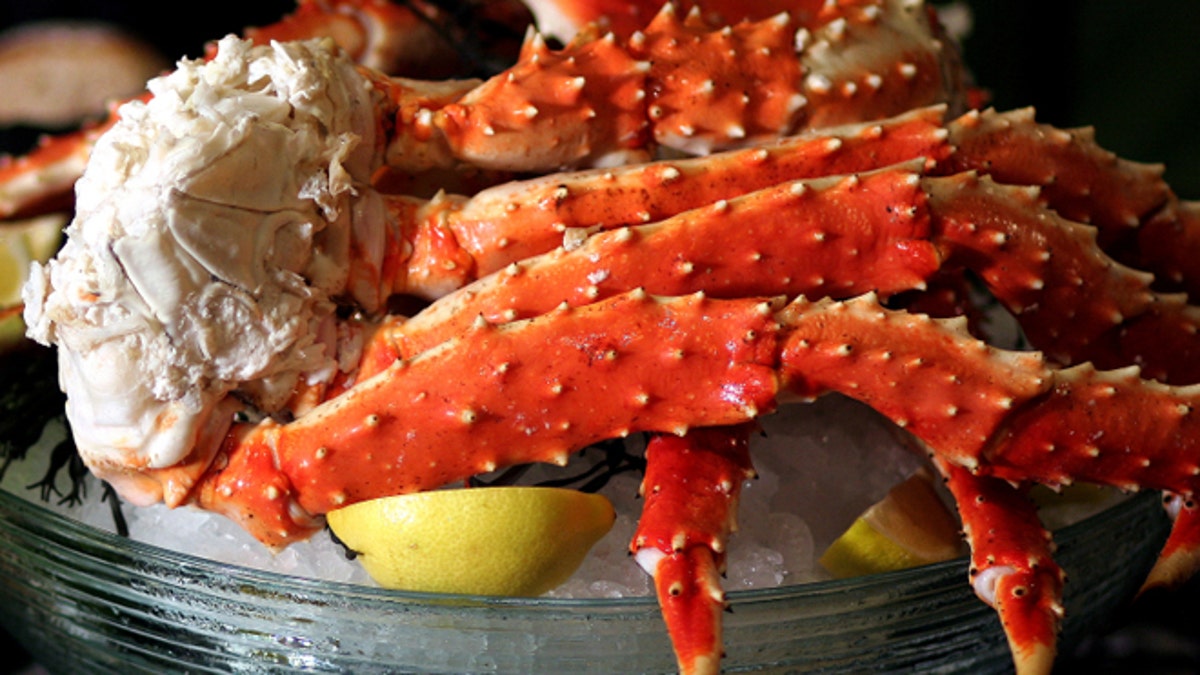
King crab has been growing in popularity for years but where is yours really coming from? (iStock)
You see them just about everywhere, those pink and white knobby claws stretched out on a bed of ice. When it comes to crab legs, Alaskan king crabs are … well … king.
But what you see in the supermarket may not be what you think. The truth is, there isn’t just one king crab, and yours may not be from Alaska.
"Only king crab caught in Alaska can legally be called Alaskan king crab."
The World of King Crabs
King crabs live and breed all over the world, from Russia to Japan to South America, with over 40 known species.
Within Alaska alone there are three commercially viable species: the red king, blue king and golden king. The “king” name appears to have brought them all together, due to their size, but each is distinct and takes residence in a different part of the ocean off the Alaskan coast.
The most prized is the large and delicious red king, found in Bristol Bay and Norton Sound. It can weigh up to 24 pounds, and its legs can span over 5 feet.
A close second is the slightly smaller blue king, which is found in deeper waters. But since the blue king turns red when cooked, most consumers can’t tell the difference. The smallest of the three, the golden king, has the mildest flavor and tends to sell for less.
The same species is caught commercially all over the world, but “Only king crab caught in Alaska can legally be called Alaskan king crab,” says Jim Donahue of UniSea, one of Alaska’s largest crab processors and exporters.
“The same species harvested in Russia or Norway is commonly called king crab in the U.S. market. In turn, only king crab caught in Russia could be legally called Russian king crab.”
Imported king crab is often called Alaskan king crab, because many people think that's the actual name of the species. But 75 percent of the king crab sold in the U.S. is imported from Russia, where the crabs are caught using unsustainable fishing practices, and much of the meat is mislabeled and brought into the U.S. illegally, according to a recent study by the World Wildlife Fund.
An Increase in Demand
King crab has been growing in popularity for years, says Jake Jacobsen, executive director of Inter-Cooperative Exchange, fishing cooperative of Bering Sea crab fishermen.
“When I started fishing crab in Alaska in 1971, the crab meat was removed from the shell and packed as blocks of meat. Most of this product went to Japan,” he said.
But cost increases turned the industry toward in-shell whole sections. The main body continued to go to Japan, where it became sushi, and the impressive looking legs became popular in the U.S.
By the early 1980s Alaskan king crabs were so popular that 200,000 pounds were caught annually – driving the price up to about $27 per pound today. Russian king crab, by comparison, costs about $14 per pound.
In recent years, the Alaskan Seafood Marketing Institute has been pushing for better branding of Alaskan king crab in the U.S., trying to distinguish it from the imports. And the Discovery Channel’s “The Deadliest Catch” has given the Alaskan king crab a dramatic allure by highlighting the dangers faced by Alaskan fishermen, whose fatality rate –due to drowning and hypothermia--is one of the highest among workers, according to the Department of Labor Statistics.
“King crab has taken on a new mystique as not only a great tasting seafood, and an impressive looking dish, but as something that was obtained at great risk and challenge,” Jacobsen said.
A Move Toward Sustainability
But growing demand has created a need for conservation.
In 2005, with stocks depleting, Alaska implemented severe catch rules. Fisheries now must comply with stock rebuilding plans and total allowable catches that comprise a small fraction of the adult male population. A strict weight limit is enforced, and crab pots must enable juveniles to escape so that they can’t be caught too early. Female crabs cannot be sold.
But in Russia, poorly regulated fishing is putting king crab stocks on the verge of collapse. And the illegal imports flooding the U.S. market are undercutting the price of the more expensive Alaskan king crab.
The Pacific Scientific Research Institute of Fishery and Oceanography found that due to poaching, the female crab stock in Russia is down as much as 84 percent.
Experts say it’s important to look at the label when buying king crab, and that if it says “imported,” it is not Alaskan king crab. And if the label says Alaskan king crab, ask your fishmonger to be certain.
Russian crabs maybe cheaper, but how they’re being caught is threatening their population. If more people understood the differences, Jacobsen said, “they would be more than willing to pay a few cents more for Alaskan product.”
